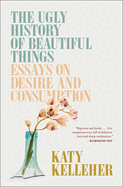
As people debate whether it's okay to love beautiful art made by morally dubious individuals, Katy Kelleher mulls over a companion question in her finely wrought collection, The Ugly History of Beautiful Things: Essays on Desire and Consumption: Is it okay to love and own beautiful things that have a dark institutional history?
Each of the book's 10 essays focuses on a particular thing of either beauty or beauty-enhancing value: the mirror, the flower, perfume, silk, and so on. Kelleher blends reportage with autobiography, documenting each subject's history (the science and mythology behind it, how it acquired value) while interweaving her highly personal take on the subject: as a Mainer, a millennial, a parent, and someone prone to depression. Although the central project of the book is to face the grim past of treasured things ("The slave trade was funded in no small part by cowrie-shell money"), Kelleher isn't on the side of self-denial: "I do believe the experience of contemplating something and judging it to be beautiful does provide a little moment of mental ecstasy, a petit mort for your brain."
The Ugly History of Beautiful Things makes a valiant case for consuming conscientiously whenever possible: "I want you to understand how that beauty came to be, what price was paid and by whom, and how you can most ethically partake in the beauty of the world, whether it is by visiting a museum, walking on a beach, or commissioning a painting." Or by reading a lovely book like Kelleher's. --Nell Beram, author and freelance writer

